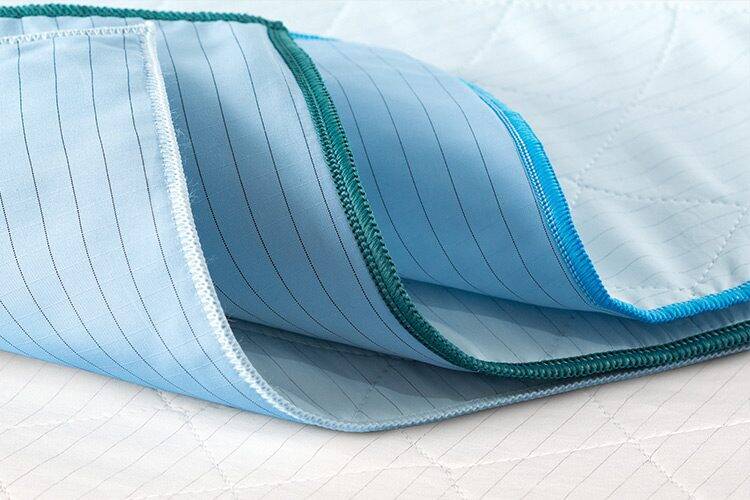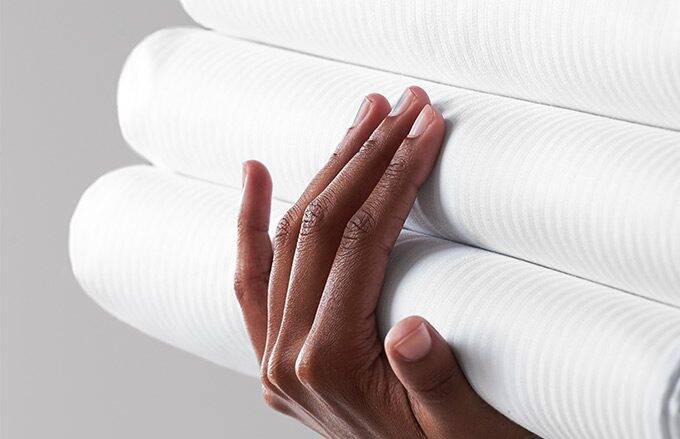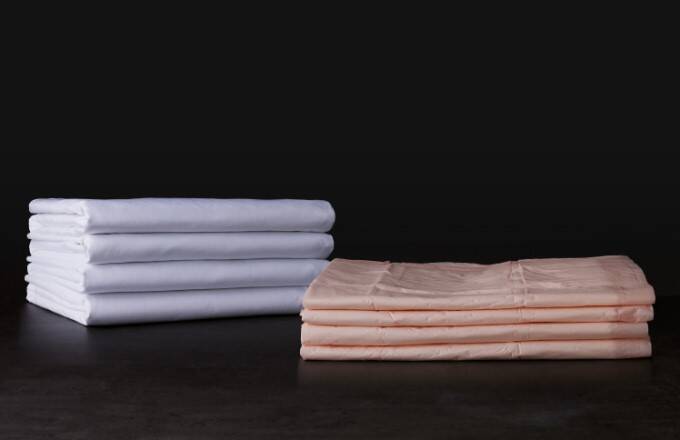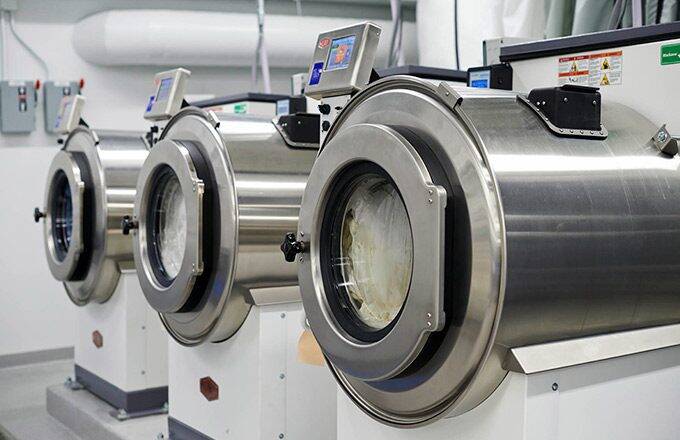July 24, 2022
Think Differently: Therapeutic Linens and the Acute Care Patient Experience During COVID-19 and Beyond

The following article originally appeared in Wound Source® on October 5, 2020
This spring, Standard Textile, a global manufacturer of health care and hospitality products, restructured its entire supply chain to provide support for America’s frontline medical workers during the current pandemic. For months, the company has been leading an urgent charge to increase production of PPE (personal protective equipment) such as protective gowns, face masks and face shields, in order to provide hospitals and health care workers in the United States with additional protection against COVID-19.
“Our health care customers are on the frontline of treating patients and saving lives, and we’re relentlessly working to ensure our customers and our communities have continuous access to essential supplies needed to safeguard the health of clinicians, patients, and their families,” said Gary Heiman, President and Chief Executive Officer of Standard Textile.
The company pivoted and revamped its Brownsville, Texas facility to make face masks. In another facility, employees were reassigned to make face shields. And a collaboration between the company’s research and development laboratory, and its operations in Thomaston, Georgia and Union, South Carolina, resulted in rapidly developing a unique American version of a liquid resistant, breathable and reusable cover gown for health care workers.
The pandemic has exposed vulnerabilities in U.S. health care supply chains, resulting in unpredictable issues with securing and distributing disposable products. Reusable textile solutions provide greater assurance for reliable, consistent delivery from a trusted source. And as the National Pressure Injury Advisory Panel (NPIAP) has stated in their recent Position Paper, “The COVID-19 crisis has dramatically changed significant aspects of pressure injury prevention in acute care hospitals.”
When patients are confined for long periods of time to a patient bed, therapeutic intervention is necessary. The patient’s body is in nearly constant, intimate physical contact with the linens on their bed. Yet, health care bedding has changed very little over time. Traditional cotton/poly sheets have no therapeutic properties, and in many cases, trap heat and moisture, contributing to tissue breakdown. DermaTherapy® by Standard Textile offers reusable textiles focused on caring for the skin and helping to prevent pressure injuries.
The Agency for Healthcare Research and Quality reports an overall decline in hospital-acquired conditions over the past few years, with the exception of pressure injuries and surgical site infections—which are increasing—indicating that this is an ongoing and serious issue. More than 2.5 million patients are impacted by pressure injuries each year, and the issue results in $9.1-$11.6 billion in annual health care costs.
DermaTherapy® by Standard Textile is the first and only silk-like therapeutic linen system with FDA 510(k) clearance as a Class I medical device to reduce the risk of patients developing pressure injuries. Silk-like linen is recommended in NPIAP’s Clinical Practice Guidelines as a method for preventing pressure injuries and improving patient outcomes. The chapter on Bed Linen in the 2019 International Guideline for prevention and treatment of pressure injuries also states: “Consider using textiles with low-friction coefficients for individuals with or at risk of pressure injuries.”
The evidence for the recommendation to consider using a low-friction coefficient textile is primarily based on the results of a wide variety of studies exploring the effectiveness of silk-like fabrics that reduce shear stress, minimize skin irritation, and dry quickly when compared to cotton or cotton-blend fabric. DermaTherapy® keeps the patient’s skin cooler, decreases metabolic demand, and reduces bioburden—a potential source of infection. Additionally, DermaTherapy® minimizes friction between the fitted sheet and the underpad, providing easier patient positioning and less back strain on clinicians.
The advantages of reusable products might come as a surprise, but now may be the time to consider implementing them. Switching from all disposable products to a mix of reusable and disposable may save your organization money, reduce waste, and lower your environmental footprint. Studies have shown that compared to disposables, reusables are more comfortable, easier to use, and safer. Another study reported that silk-like linens last three times as long as cotton blend sheets.5 Additionally, a cost analysis in the same study indicated a cost savings of $3.9 million USD associated with using silk-like fabric.
Better incontinence care and improved patient positioning addresses the needs of both patients and caregivers in acute care environments. Strengthen your supply, control your costs, and positively impact patient outcomes.
Related Content

Beyond Product Cost: How Choosing the Right Linens Can Save Hoteliers Money
Switching to a cheaper product may save in the short-term, but it often costs more in the long run. Here are several costs to consider beyond product cost.

Reusable or Disposable? 10 Key Incontinence Care Considerations
Effective incontinence care prioritizes dignity while minimizing the exposure of a patient’s skin to moisture. But, how do you know which underpad option is best for your patients? What are the differences between a reusable and a disposable underpad? Read our latest blog to learn more.

Common Laundry Mistakes that Can Ruin Hotel Linens
Let’s explore important laundry DON’Ts from our laundry experts that will keep your linens in tip top shape.